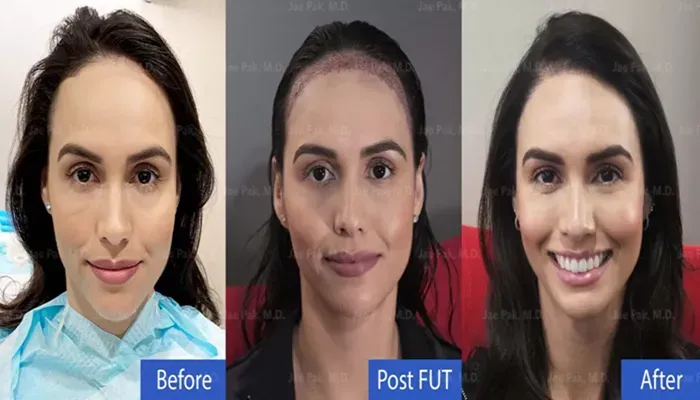Hair loss is a common concern that affects millions of people worldwide. For those seeking a permanent solution, hair transplantation is often the most effective option. However, with several hair transplant methods available, it can be challenging to determine which one is the best for your specific needs.
In this article, we will explore the different hair transplant methods, their pros and cons, and how to choose the best method for you. By the end of this article, you will have a clear understanding of the various hair transplant techniques and be better equipped to make an informed decision.
Understanding Hair Transplantation
Hair transplantation is a surgical procedure that involves moving hair follicles from a donor area (usually the back or sides of the scalp) to a recipient area (the thinning or balding area). The goal is to restore hair growth in areas where hair has been lost or thinned out. The success of a hair transplant depends on several factors, including the skill of the surgeon, the quality of the donor hair, and the chosen method.
Types of Hair Transplant Methods
There are several hair transplant methods available, each with its own set of advantages and disadvantages. The most commonly used methods include:
- Follicular Unit Transplantation (FUT)
- Follicular Unit Extraction (FUE)
- Direct Hair Implantation (DHI)
- Robotic Hair Transplantation
- Sapphire FUE
1. Follicular Unit Transplantation (FUT)
Pros
Higher Graft Yield: FUT allows for the transplantation of a larger number of grafts in a single session, making it suitable for patients with extensive hair loss.
Cost-Effective: FUT is generally less expensive than FUE because it is less labor-intensive.
Shorter Procedure Time: The procedure is typically faster than FUE, especially for larger sessions.
Cons
Linear Scar: FUT leaves a linear scar in the donor area, which can be noticeable if the hair is cut very short.
Longer Recovery Time: The recovery time is longer compared to FUE due to the need for sutures or staples to close the donor area.
Post-Operative Discomfort: Patients may experience more discomfort and tightness in the donor area after the procedure
2. Follicular Unit Extraction (FUE)
Pros
No Linear Scar: FUE does not leave a linear scar, making it a better option for patients who prefer to wear their hair short.
Faster Recovery: The recovery time is shorter compared to FUT, and there is less post-operative discomfort.
Minimal Scarring: The tiny puncture wounds from the extraction heal quickly and are less noticeable.
Cons
Lower Graft Yield: FUE typically yields fewer grafts in a single session compared to FUT, making it less suitable for patients with extensive hair loss.
Higher Cost: FUE is generally more expensive than FUT due to the labor-intensive nature of the procedure.
Longer Procedure Time: The procedure can take longer, especially for larger sessions.
Factors to Consider When Choosing the Best Hair Transplant Method
Choosing the best hair transplant method depends on several factors, including:
Extent of Hair Loss: The amount of hair loss and the area to be covered will influence the choice of method. FUT is often preferred for extensive hair loss, while FUE or DHI may be suitable for smaller areas.
Donor Hair Quality: The quality and density of the donor hair will affect the success of the transplant. A thorough evaluation by the surgeon will help determine the best method.
Scarring Concerns: If you prefer to wear your hair short, FUE or DHI may be better options due to the absence of a linear scar.
Budget: The cost of the procedure can vary significantly between methods. It’s important to consider your budget and choose a method that offers the best value for your investment.
Recovery Time: If you have a busy schedule and need a quicker recovery, FUE or DHI may be more suitable due to their shorter recovery times.
Surgeon’s Expertise: The skill and experience of the surgeon play a crucial role in the success of the procedure. Choose a surgeon who is experienced in the method you prefer.
Conclusion
The best hair transplant method depends on your individual needs, preferences, and the extent of your hair loss. FUT, FUE, DHI, robotic hair transplantation, and Sapphire FUE each have their own set of advantages and disadvantages. By understanding the differences between these methods and considering factors such as scarring, recovery time, and cost, you can make an informed decision and choose the method that is best suited to your needs.
If you’re considering a hair transplant, it’s essential to consult with a qualified and experienced hair transplant specialist. They can evaluate your specific situation, recommend the most appropriate method, and guide you through the process to achieve the best possible results. With the right approach, you can restore your hair and regain your confidence.
Related topics:
- Which Method of Hair Transplant is Best? A Detailed Guide
- What Is the Best Hair Regrowth Method?
- What Is the Most Effective Hair Transplant Method?


